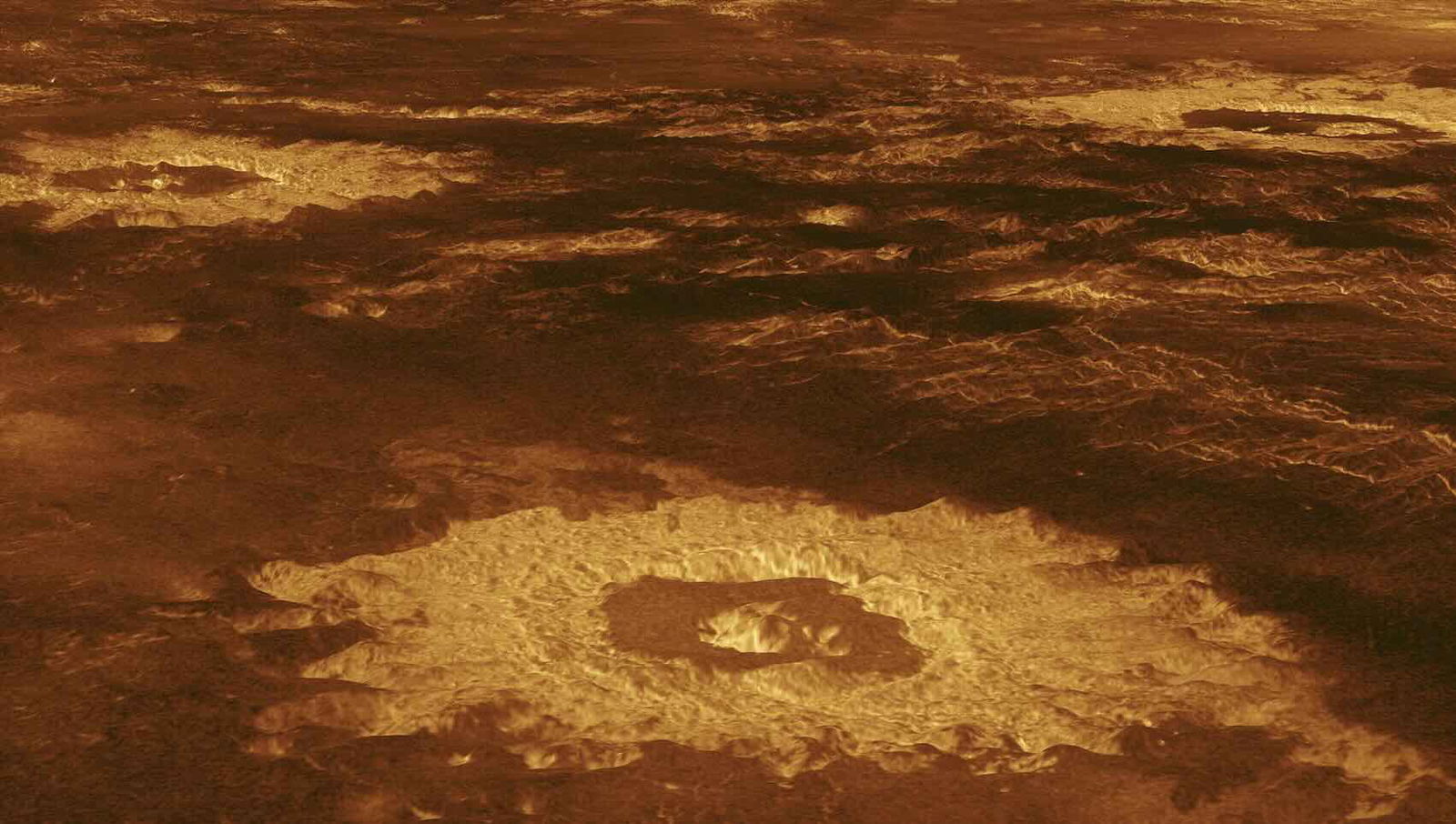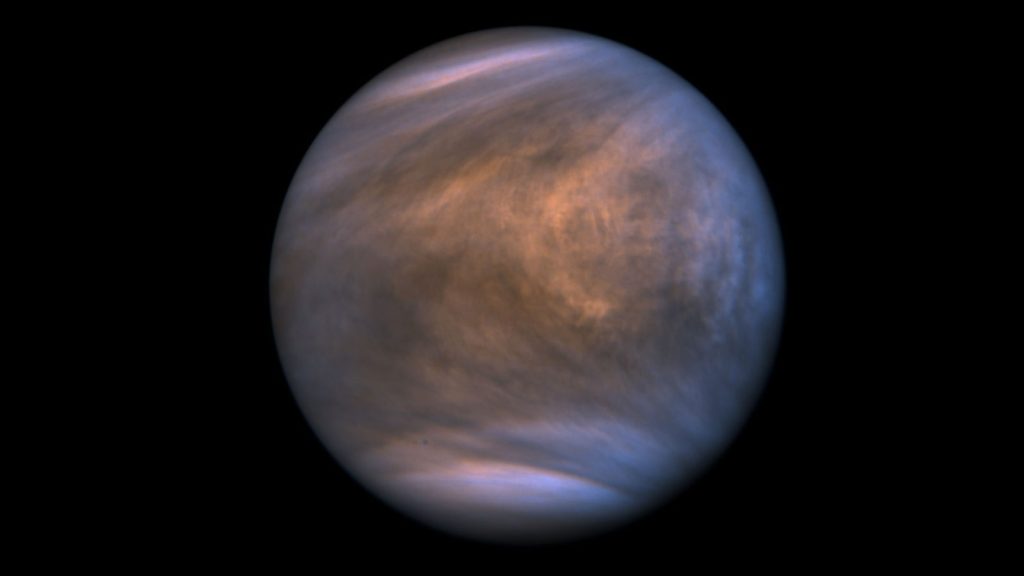Recent observations of Venus have provided new evidence of compounds that could indicate life in the planet’s atmosphere, a finding that could add weight to previous controversial findings.
Phosphine is a toxic gas that astrobiologists have proposed may be linked to the presence of life. Rocky planetswas first spotted in Venus’ atmosphere four years ago as a surprise find, and now new observations may strengthen those previous findings, suggesting the presence of biological signatures that, if confirmed, could mean life could thrive in the planet’s harsh environment.
Controversial discovery on Venus
Phosphine was first detected in the oxidizing atmosphere of Venus report A team of scientists led by Jane Greaves of Cardiff University announced they had found evidence of the toxic molecule in September 2020. Since phosphine is typically associated with organisms that thrive in low-oxygen environments, the discovery initially sparked debate about the possibility of life on Venus.
The team’s announcement attracted media attention and It sparked controversy The announcement drew condemnation from some in the scientific community, perhaps most harshly from the organizing committee of the International Astronomical Union’s (IAU) Commission on Astrobiology F3, which raised ethical questions about the way Greaves and her team had publicized their findings.
“It is the ethical duty of every scientist to communicate with the media and the public with scientific rigor and to be careful not to exaggerate interpretations that could be irrevocably picked up by the press,” the committee said in an official statement at the time.
“We would like to remind the researchers involved that before communicating with the press or media, they need to understand how they will behave,” the committee added.
Initial follow-up efforts to find the compound again were unsuccessful, but last year Greaves and her team Successful During observations with the James Clerk Maxwell Telescope (JCMT) at Mauna Kea Observatory in Hawaii, researchers detected phosphine deep in Venus’ atmosphere. Additional detections by NASA’s Stratospheric Observatory for Infrared Astronomy (SOFIA) also suggested the presence of phosphine. The phosphine may have originated from within or beneath the clouds of Venus.

Interestingly, another study led by Rakesh Mogul of California State Polytechnic University reanalyzed data acquired by NASA’s Pioneer Venus probe in 1978. reveal This is further evidence of the presence of phosphine in the planet’s atmosphere and appears to be consistent with previous findings.
“So far, our analysis has not been challenged in the literature,” Mogul said of his team’s findings, which he characterized as standing in “stark contrast” with the telescopic observations by Greaves and his colleagues, which Mogul said “remain controversial.”
New findings still require caution
With the help of a new receiver aboard the James Clerk Maxwell Telescope, Greaves and his colleagues say they have collected 140 times more data than previous observations, including the additional detection of phosphine. The new findings were announced during a meeting of the Royal Astronomical Society on July 17 in two presentations by Greaves and David Clements, a researcher at Imperial College London who worked on the discovery.
But of even greater interest in the search for life on Venus is the evidence for the presence of ammonia in the planet’s atmosphere, which Clements says It is called “That’s more significant than the discovery of phosphine.” Notably, a 2021 study by Mogul and his colleagues also found that ammonia may be present in Venus’ atmosphere.
Despite the potential importance of the discovery, Greaves’ talk at the Society’s conference earlier this month emphasized in his presentation slides that “there are many important unknowns about the surface and atmosphere of Venus.” two The presence of biomolecules is not evidence of life!”
Similarly, Clements He told CNN He said it was too early to speculate that these gases indicate life exists on Venus, but acknowledged that the presence of ammonia and phosphine certainly strengthens the possibility.
Promising Preliminary Findings
In a presentation this month, Greaves warned against jumping to conclusions, but explained that any life on Venus could produce ammonia to make the environment less acidic and more habitable. If so, he and his colleagues speculate, the gas could rise into the atmosphere and be detected.
“Ammonia was detected in high-level clouds, where temperatures are below -15°C, likely too cold for life to exist,” the report said. Posts The Royal Astronomical Society’s official X account summarized Grieve’s presentation:
“The researchers hope to determine whether the molecule is also present deep within the much warmer Venus clouds,” the report added.
Your Venus session will be even more exciting! translation: In addition to phosphine, a second potential biomarker gas, ammonia, has been tentatively detected in Venus’ clouds, according to a study from Cardiff University.
Again, it is important to emphasize that these are preliminary findings. pic.twitter.com/pxptIkTzxF
— Royal Astronomical Society (@RoyalAstroSoc) July 17, 2024
Further confirmation is needed, and that could come in a few ways: One possibility is data collected by NASA’s Venus Deep Atmospheric Noble Gases, Chemistry, and Imaging Survey (DAVINCI), which will send a probe into Venus’s harsh environment. Measuring the atmosphere 2029.
Another chance to measure Venus’ atmosphere may come from the European Space Agency’s Jupiter Icy Moons Orbiter, which is due to fly by Venus next year and carry instruments that could capture useful data that could complement Greaves and his colleagues’ findings.
But until that data is available, the new findings, while promising, are not conclusive.
“Again, it is important to emphasize that these are preliminary findings,” the association said in a post about X.
Micah Hanks is editor-in-chief and co-founder of The Debrief. He can be reached by email at Email: [email protected]His work micahhanks.com And for X: Micah Hanks.



